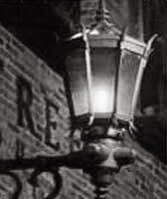Natural Gas History
The Chinese discovered natural gas in 600 BC, but it wasn’t until the 1950s that natural gas pipelines were built for widespread use of natural gas in the United States. Here’s what happened in between.

Discovery of Gas (600 BC)
The ancient Chinese were the first to discover underground deposits of natural gas. In 600 BC, Confucius wrote of wells 100 feet deep yielding water and natural gas along the Tibetan border. The Chinese piped the gas to where it was needed through long, hollow bamboo poles.

First Use of Natural Gas in the Home (100 AD)
The first recorded use of natural gas in the home was in Persia (now Iran) around the first century AD. Natural gas seeped out of the ground and was ignited by lightning, producing a hot flame that burned continuously, day and night. The King of Persia decided to take advantage of this “eternal flame.” But instead of having the gas piped to his home—like we do today—he built his royal kitchen near the flame.

Natural Gas Use in America (1626)
Natural gas usage was identified in America as early as 1626, when French explorers found Native Americans igniting gases that were seeping into and around Lake Erie.

Natural Gas Streetlights (1800s)
For most of the 1800s, natural gas was used as a fuel for lamps. There were no pipelines to bring gas into individual buildings, so most of the gas went to light city streets. After the 1890s, cities began using electricity for their streetlights so gas producers began searching for new uses for their product.

First Natural Gas Well in U.S. (1821)
In 1821, a gunsmith named William Hart drilled the first natural gas well outside Fredonia, New York, near Lake Erie. He dug down 27 feet. (Today’s wells go down more than 30,000 feet!) Hart is considered by many to be the “father of natural gas” in the United States. In 1858, he formed the Fredonia Gas Light Company, the nation’s first natural gas company.

First Natural Gas Pipeline in U.S. (1859)
In 1859, Colonel Edwin Drake drilled a 69-foot well in Pennsylvania that struck natural gas and oil. Later, a 5½-mile-long, 2-inch-diameter pipeline was constructed, running from the well to the town of Titusville. Many consider this first gas transportation pipeline to be the start of the natural gas industry in this country.

First Gas Burners (1885)
Ever heard of a Bunsen burner? Robert Bunsen was a German scientist who made popular a burner that mixed air with natural gas, thus allowing the natural gas flame to be regulated. This made it more convenient to use natural gas for heating buildings and cooking.

Widespread Construction of Gas Pipelines (1940s to Present)
Improvements in metals, pipe making, and welding techniques during World War II made pipeline construction more economically attractive. After the war, the nation began building its pipeline network. In the 1950s and 1960s, thousands of miles of natural gas pipeline were constructed throughout the United States. Today, this interstate pipeline system contains over one million miles of pipe—enough to stretch to the moon and back twice.

